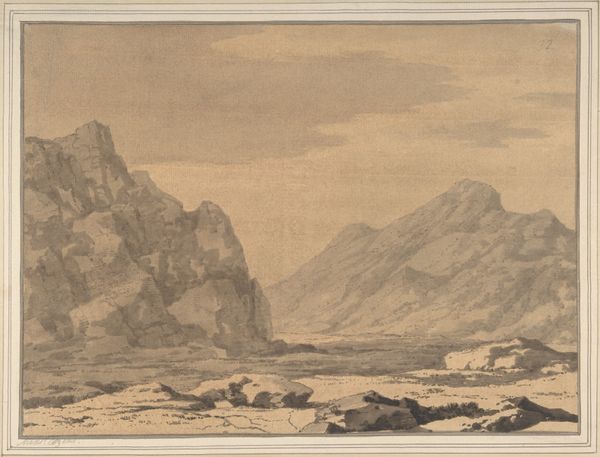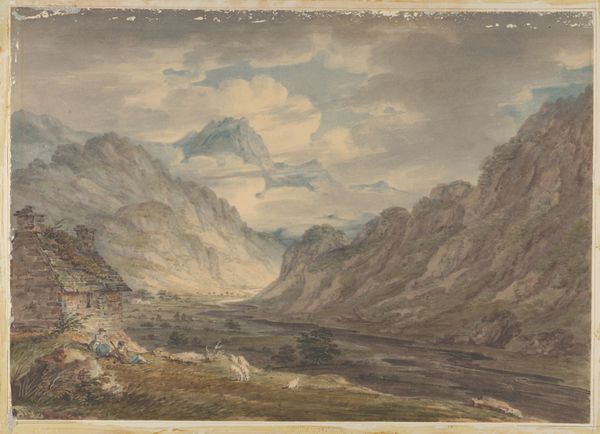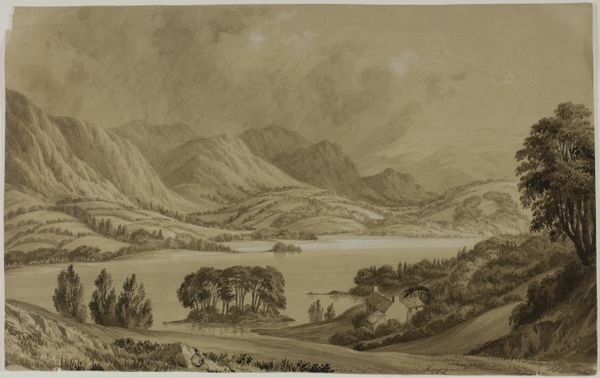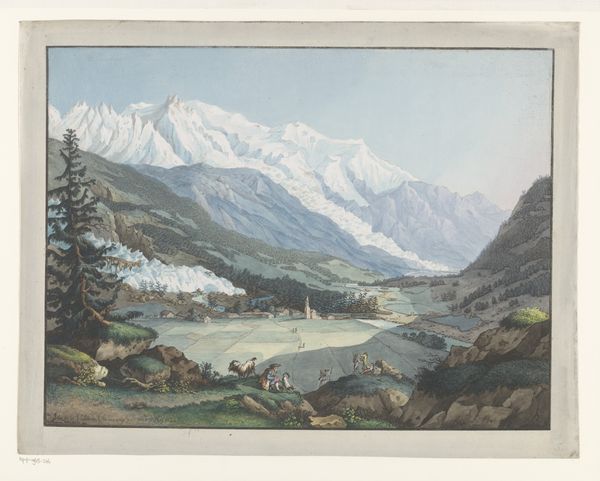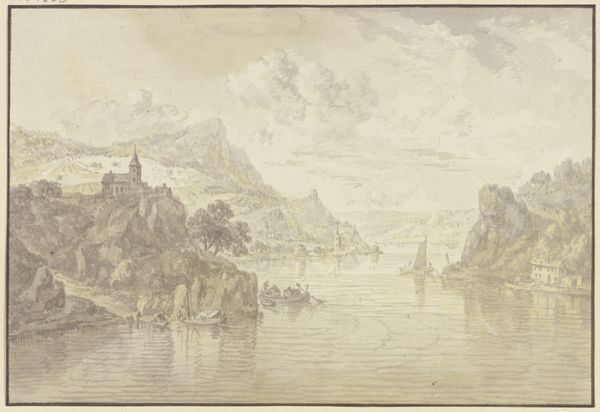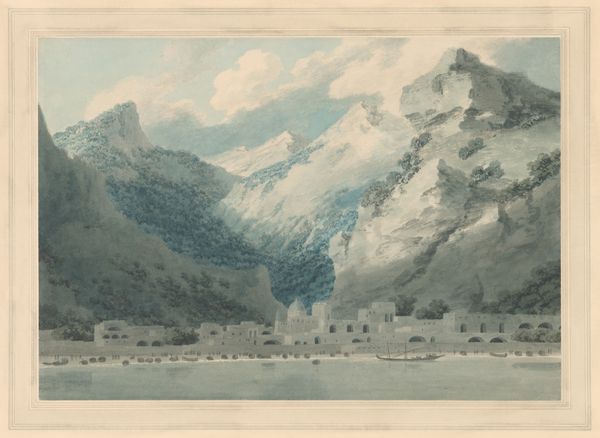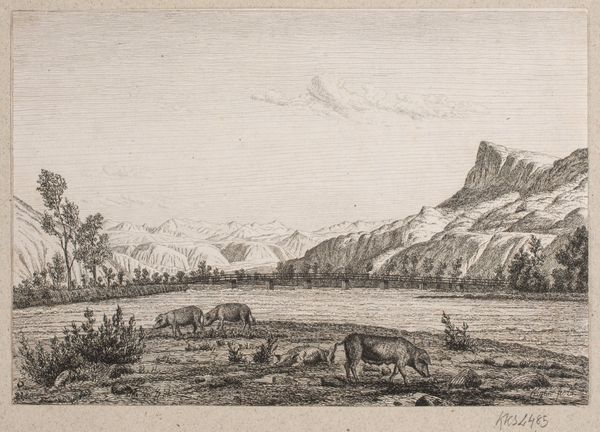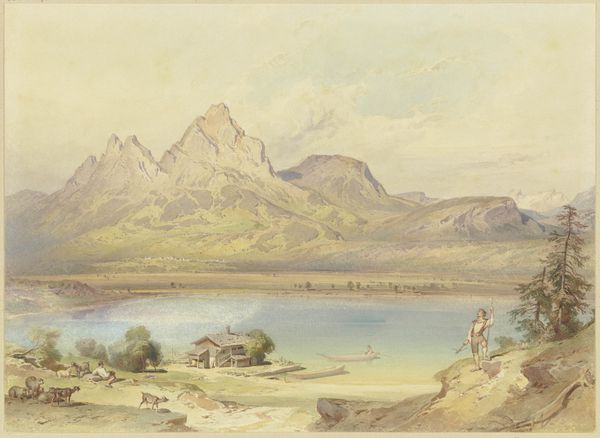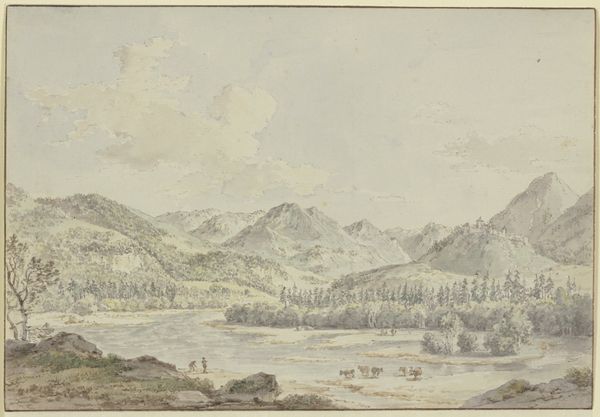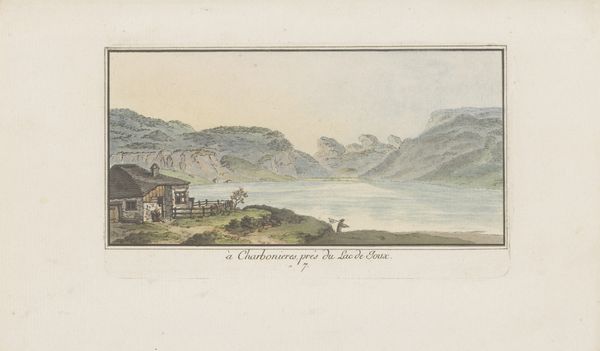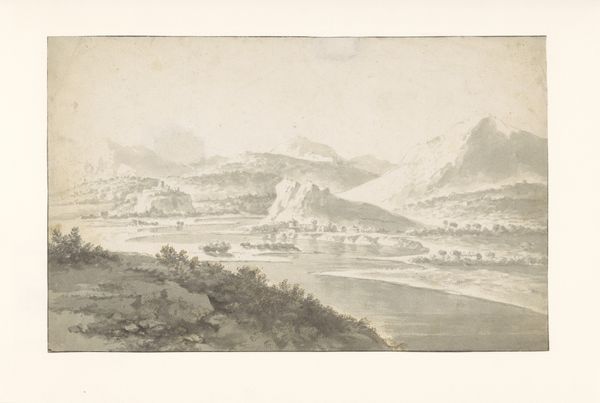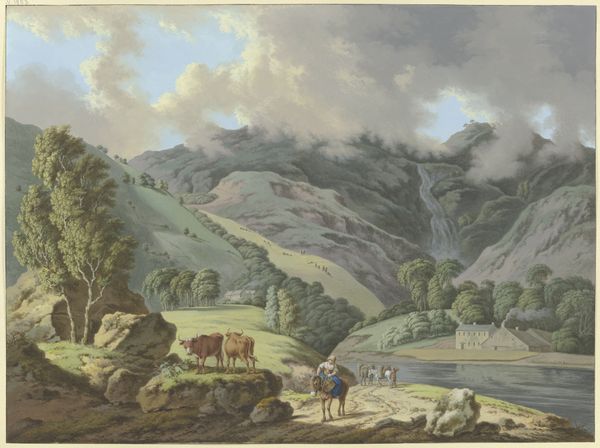
drawing, coloured-pencil, print, watercolor
#
drawing
#
lake
#
coloured-pencil
#
water colours
# print
#
landscape
#
watercolor
#
coloured pencil
#
underpainting
#
mountain
#
northern-renaissance
#
watercolor
Dimensions: Image: 10 1/4 × 14 11/16 in. (26.1 × 37.3 cm) Sheet: 12 13/16 × 16 7/8 in. (32.6 × 42.8 cm)
Copyright: Public Domain
Editor: So, this is Lars Møller's "The lake of Kuggsuak at Tasermiut, Greenland," created around 1863. It's a watercolor drawing. There’s a certain serenity in the vast, almost untouched landscape, but the scale also makes me feel incredibly small. What strikes you most about this piece? Curator: The fascinating element here is its intersection with colonial projects and scientific expeditions of the 19th century. These landscape depictions served as crucial visual documentation. Møller, being Greenlandic, likely occupies a complex positionality. Consider who commissioned this work, its intended audience, and how that shapes our perception of Greenland at that time. Is this a neutral observation, or a promotion of the region to colonizers and scientists? Editor: That's an angle I hadn't considered. So, this seemingly beautiful landscape also functions as a form of...visual data collection? A sort of early geographic survey, maybe? Curator: Precisely. Notice the meticulous details: the rendering of the mountains, the specific types of vegetation represented, even the figures in the landscape. Were these elements meant to provide information for resource extraction, habitation potential, or scientific classification? How did this representation affect Greenlandic people and their culture? Editor: It shifts my perspective entirely. It is less an untouched landscape and more a surveyed terrain with human activity embedded in the image. The artist, working during the Danish colonial period, becomes a mediator in this exchange. Do you think the image serves to preserve Greenlandic culture, or, conversely, to enable the dismantling of Greenlandic lifeways? Curator: It is quite possibly doing both simultaneously. By capturing these visual representations, we can study its history in more detail and question what Greenland looked like during its colonial past. It's a reminder that art never exists in a vacuum. Editor: I agree. Thinking about art in the context of socio-political power makes you reconsider the politics behind the making of art. It makes this particular piece more intriguing. Thank you for sharing.
Comments
No comments
Be the first to comment and join the conversation on the ultimate creative platform.
